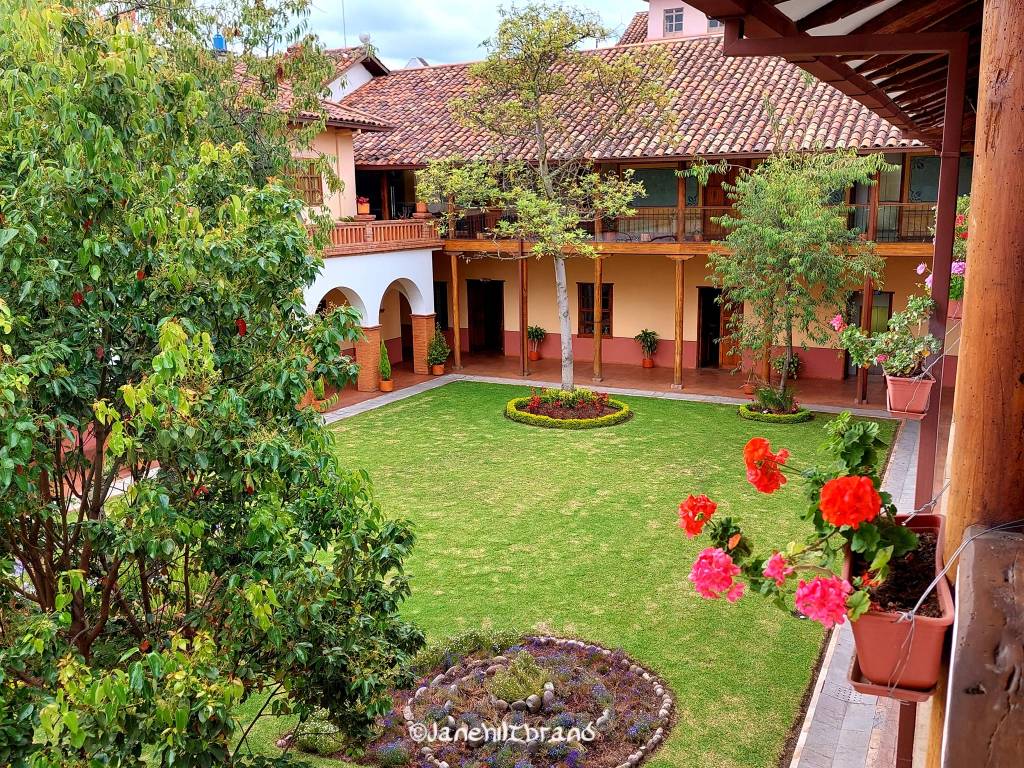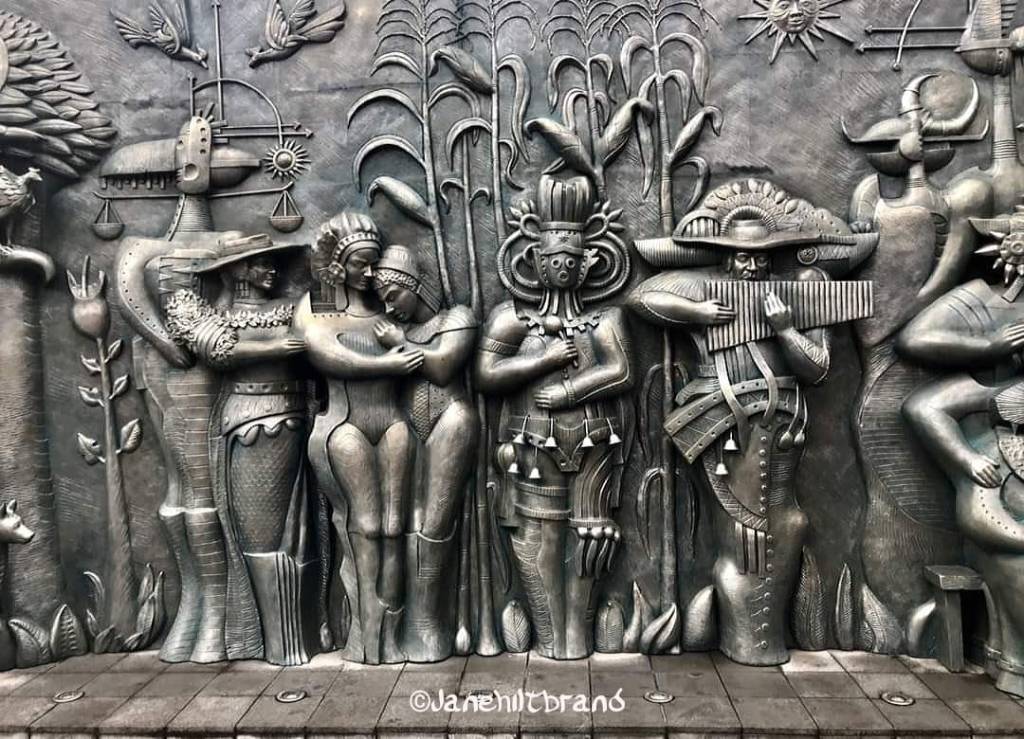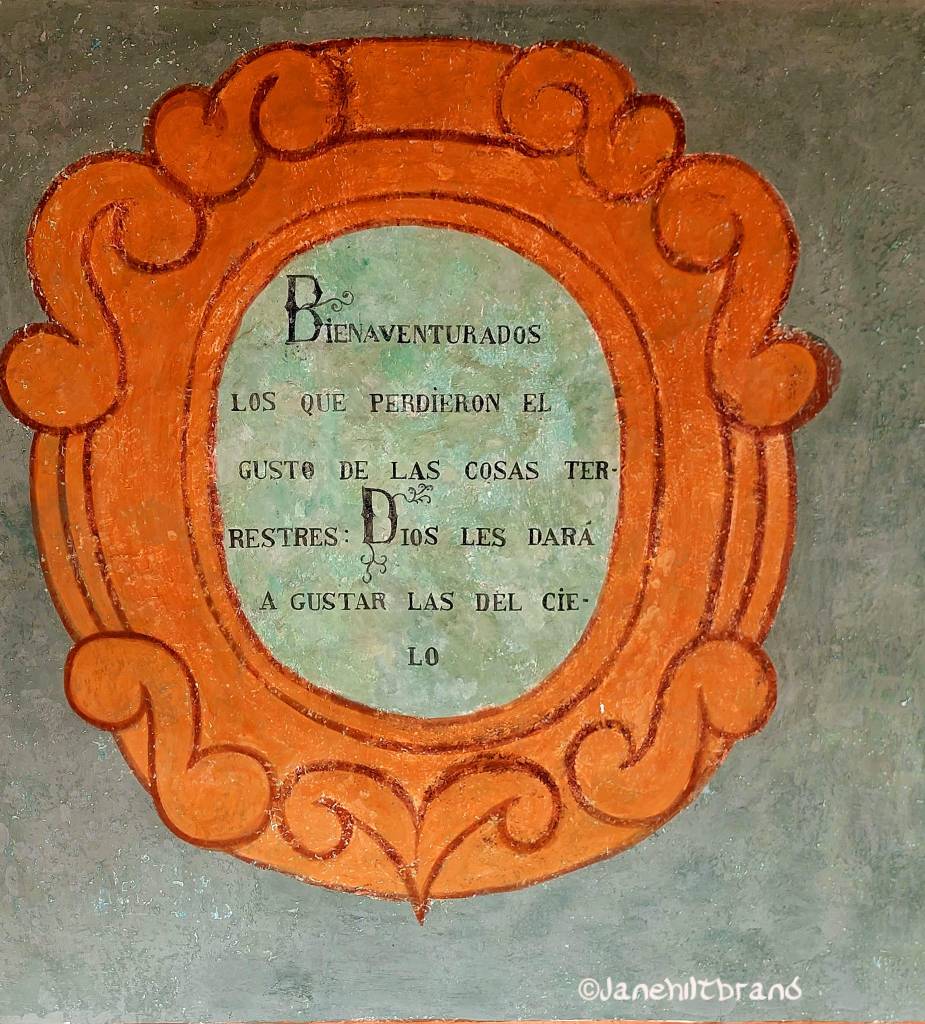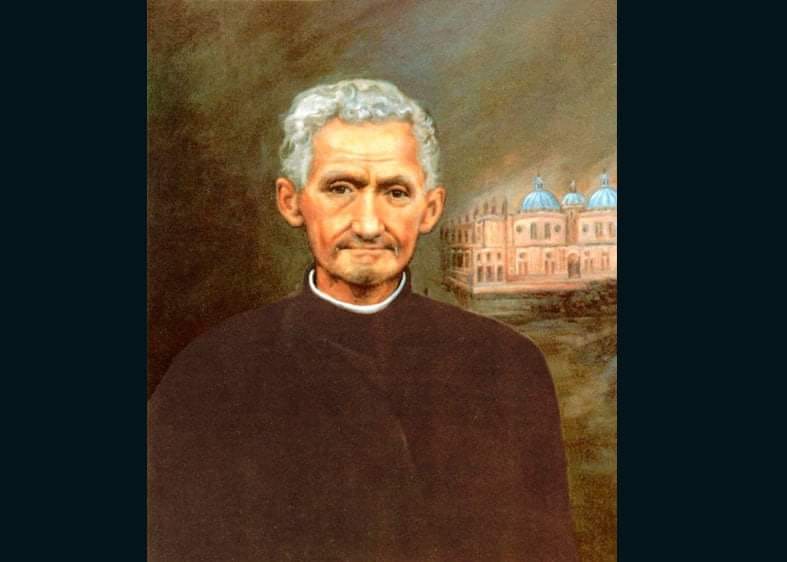#3 CAPILLA DEL CORAZON DE MARIA Y CONVENTO DEL BUEN PASTOR. Calles Mariano Cueva y Simon Bolivar. Built in 1892
The Good Shepherd Order of Nuns arrived in Cuenca in 1892. Although initially put in charge of the girls school in the St Blas district, the ultimate aim for the order was to run the city women’s prison, which opened in 1894. The first stone of the prison was laid in September 1892. The design and construction of the work is attributed to the Redemptorist monk Juan B. Stiehle.

This building now houses government offices for La Casa De La Provencia – Perfectura del Azuay.

The church is slightly set back from Tomas Ordonez Street. A small door leads from the church to the old prison grounds. — at Capilla Del Corazon De Maria Y Convento Del Buen Pastor.


The old womens prison grounds – now government offices for Perfectura del Azuay.


A very special hidden treasure is in the back of this building. EL JARDIN DE LAS MUJERES a life sized wall sculpture by artist Nicolas Herrera.It is free and open to the public. Here is a video of the artist describing the sculpture: It is a powerful sculpture of Andean forms and mythological beings: https://vimeo.com/189445142


Murals on second floor of building….


It is not possible to study architecture in Cuenca without reading about Juan B. Stiehle. The design and construction of the original women’s prison is attributed to the monk Juan B. Stiehle. Juan B. Stiehle (born in Dächingen, Kingdom of Württemberg in1829 – died in Cuenca Ecuador 1899) was a German religious Redemptorist and architect who lived much of his life in Ecuador. In 1885 Father Stiehle was commissioned to draw up the plans for the Cathedral of Cuenca, which he directed until his death in 1899, when it was still far from complete. (it took almost 100 years to build the New Cathedral) This priest was also the architect of the Iglesia of San Alfonso, and Iglesia de Santo Cenaculo in Cuenca; and additionally built numerous bridges, hospitals and schools in Cuenca. Brother Juan was the one who built part of the city with an appearance of buildings of French taste. From there came part of the so-called “Frenchification” in Cuenca construction.
